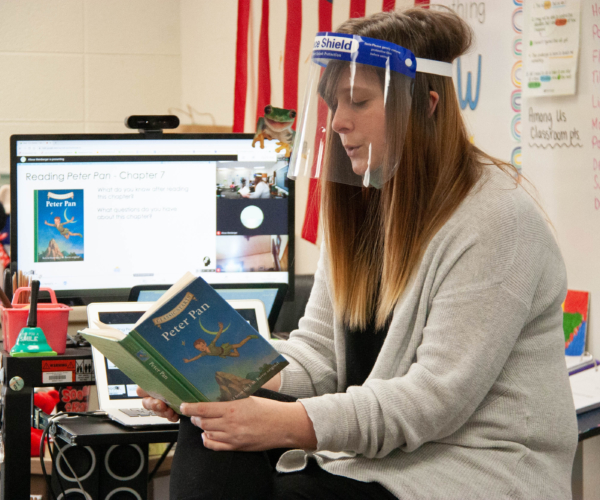At the outset of COVID, District Administrator Mark Weddig and his team decided online learning had to resemble live, in-person instruction as closely as possible.
They set up live teaching stations in the classrooms of the rural Chequamegon School District in Northern Wisconsin to make the simultaneous teaching of in-person and remote students more seamless, Weddig says.
At the outset of the pandemic, Weddig and his team determined to that remote learning would resemble live, in-person instruction as closely as possible.
The setup—a compact combination of a camera, laptops and display screens—will continue to serve the district as a learning alternative for students and families.
More from DA: Kids will be OK but need support, superintendent says
“Some students, we’ve found do better from home, especially students who don’t work well in social situations, especially if they have a lot of parent support,” Weddig says.
Students who are ill or who have suffered an athletics injury could also log in online if they have to miss school. The stations will also be used for teacher collaboration between buildings.
The district has not had to close its classrooms due to COVID this school year. Also, the latest round of assessment shows the most of Chequamegon’s students are meeting or exceeding the expected growth.
However, rural district leaders will continue to contend with the challenges they faced pre-COVID
Connectivity and cash
Not all students can get broadband service at home, regardless of whether their families can afford it. During the pandemic, the district provided hotspots but also bussed students to schools, a local hockey rink and a town hall where they can connect to Wi-Fi.
“We either bought internet into their homes or brought them to the internet,” Weddig says.
Chequamegon’s administrators have come up with two responses to teacher shortages impacting rural districts across the country.
They are encouraging district paraprofessional to seek teaching certifications and identifying and beginning to train local residents who have degrees that could qualify them for teaching.
Some district teachers are also now working on dual-certifications so they can shift between subjects to meet the system’s needs.
Finally, funding constraints have forced Weddig and his team to “trim everything down to point where if we did anymore, it’s going to hurt student learning.”
Insufficient state funding has forced Chequamegon and other Wisconsin districts to put funding measures on the ballot.
More from DA: How a community helps a rural school cope with COVID
Districts in both Democratic and Republican-leaning communities have about an 80% success rate when asking residents for pay for education.
“Red or blue, communities are supporting the schools,” Weddig says.
Ultimately, meet the challenges of COVID will prepare his staff to succeed in the future, he says.
“Next school year, without all the obstacles in their, I don’t think there’s going to be a limit to goals they can set,” Weddig says. “That same confidence has spread to student body—they surely doubted how well this would work, and now they know they can excel.”









